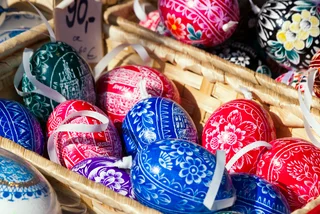We should see the start of babí léto this week, as the cold and rainy weather is expected to give way to some warming. The improvement, though, is really only a return to normal weather for this time of year. But any return to normlacy is welcome.
Temperatures should rise starting on Wednesday, and precipitation will also disappear by the end of the week. The Czech Hydrometeorological Institute (ČHMÚ) predicts weekly average highs of around 20 degrees Celsius until the end of September.
From Wednesday, Sept. 1, showers will be rare and the beginning of the first weekend after school starts should be rain-free. Saturday's high should around 24 degrees Celsius.
"After a very cold end of August, warming comes with September, but only to the usual values for this time of year," ČHMÚ said in its forecast.
In the coming weeks, average temperatures should fall gradually, but remain close to long-term averages, possibly very slightly higher.
The long-term average temperature between Aug. 30 and Sept. 26 is 14.5 degrees Celsius. The hottest was in 1942, when the average was 17.4 degrees. Meanwhile, meteorologists recorded the lowest average of 11.6 degrees Celsius in 1996. These averages combine day and night temperatures, and are not to be confused with daily highs or lows, which are significantly different.
The average total precipitation for the next four weeks is expected to be 60 millimeters, within an average range of 38 to 77 millimeters. According to records kept since 1941, the least precipitation fell in 1959, when meteorologists measured only 2 millimeters. It rained the most in 1995, with a total of 127 millimeters.
The monthly outlook is based on numerical forecasting models and expresses the overall nature of the weather, ČHMÚ said . According to meteorologists, the success of the outlook is around 75 percent for temperatures and around 65 percent for precipitation.

Babí léto translates as “granny summer,” and it is often rendered as “Indian summer,” a term popular in the U.S. and the UK, though the meanings are quite different. The use of the phrase "Indian summer" has recently been called into question. The origin of the term is unknown, but some people argue that it is offensive.
While babí léto simply refers to a warm spell in September, the popular U.S. and UK phrase refers to unseasonably warm weather in October or even November.
The Czech name could refer to the fine cobwebs that can be seen at the end of summer and in the fall, often on trees or shrubs. These are reminiscent of the long gray strands of an old woman’s hair.
In some other countries where this phenomenon occurs, the word “gossamer” is at the root of words for autumn warmth due to the silky appearance of these webs.

Another possible explanation is the fine white mist that rises from ponds and streams in the morning, as the cold water is heated by the first rays of the sun. There is also often mist in the evening as the air above waterways cools and vapor condenses.
Yet another natural occurrence that could hint at the origins of granny’s summer is the visibility of the Pleiades star cluster in the night sky. The cluster known as the Seven Sisters in English is popularly called “the grandmothers” (baby) in Czech.
The end of September is sometimes called Svatováclavské léto, or St. Wenceslas’s Summer, though that term is used less often than babí léto. St. Wenceslas’s holiday falls on Sept. 28.












 Reading time: 3 minutes
Reading time: 3 minutes 




























